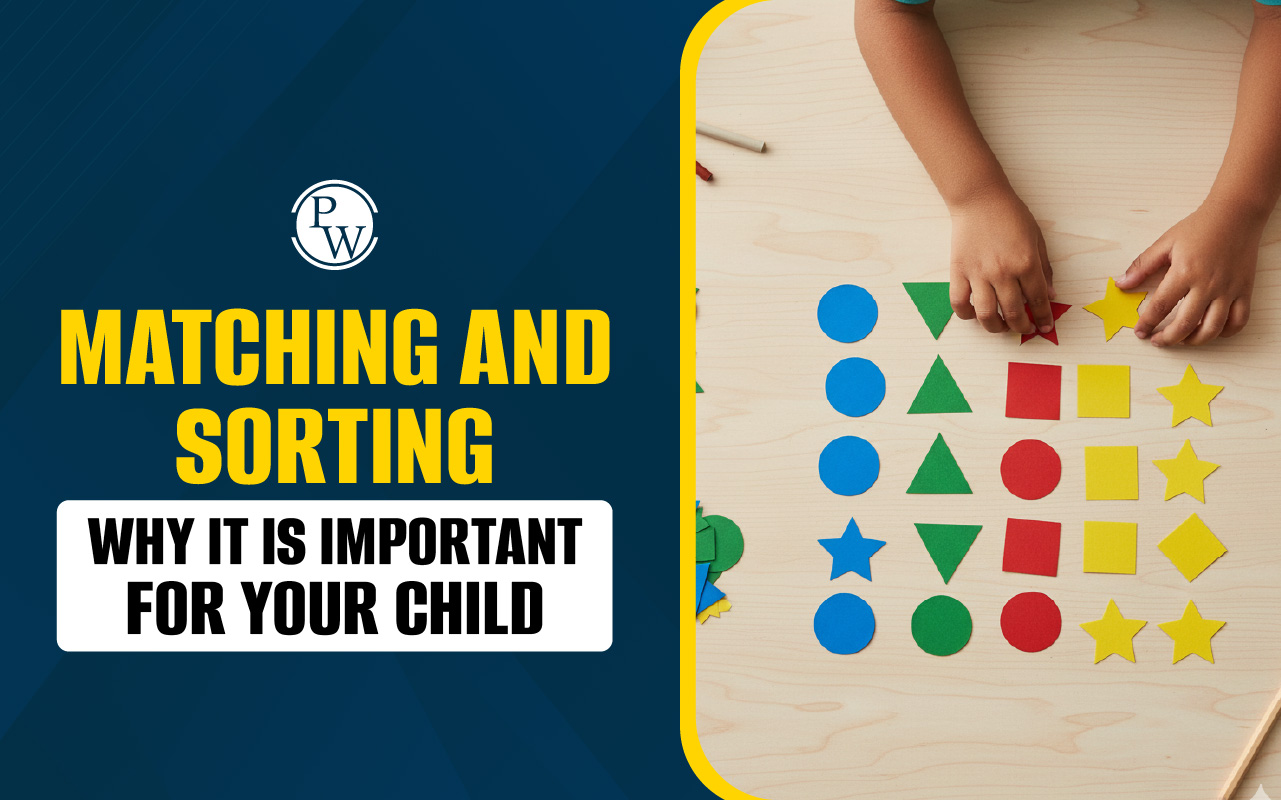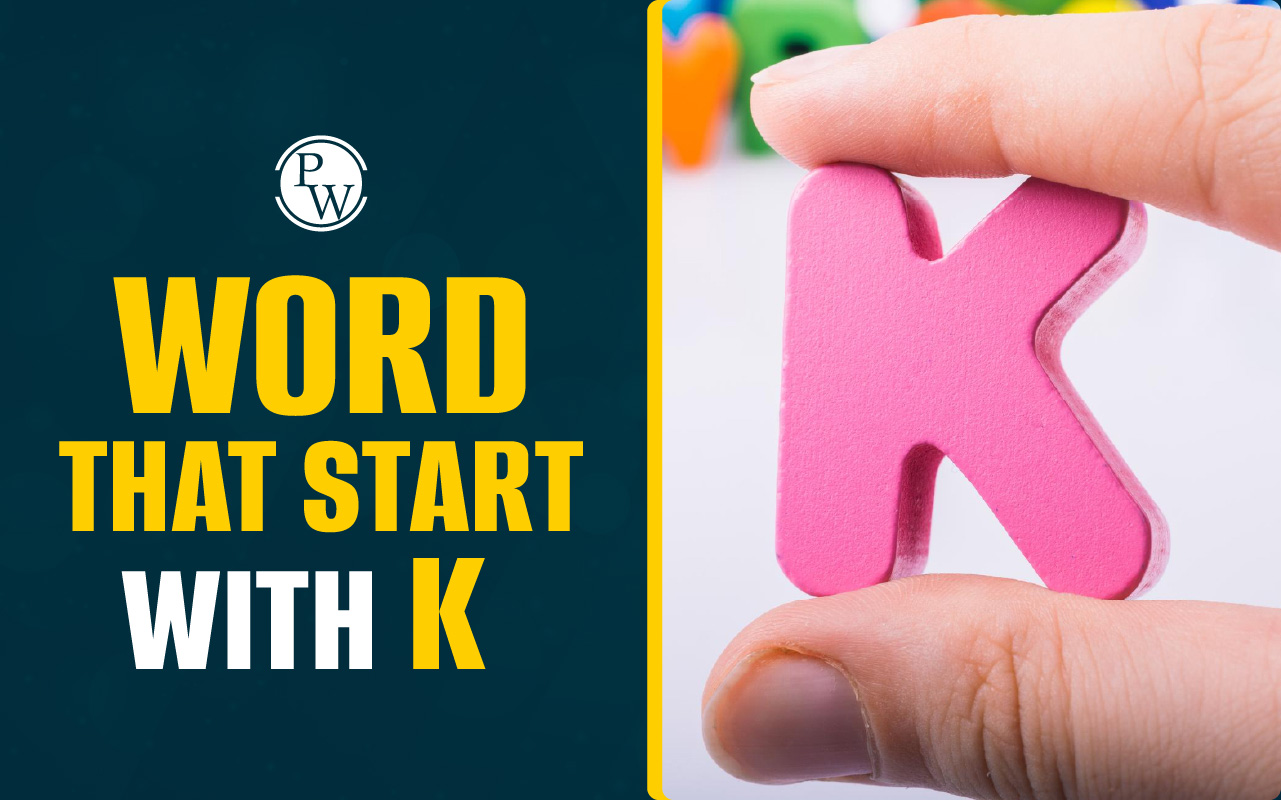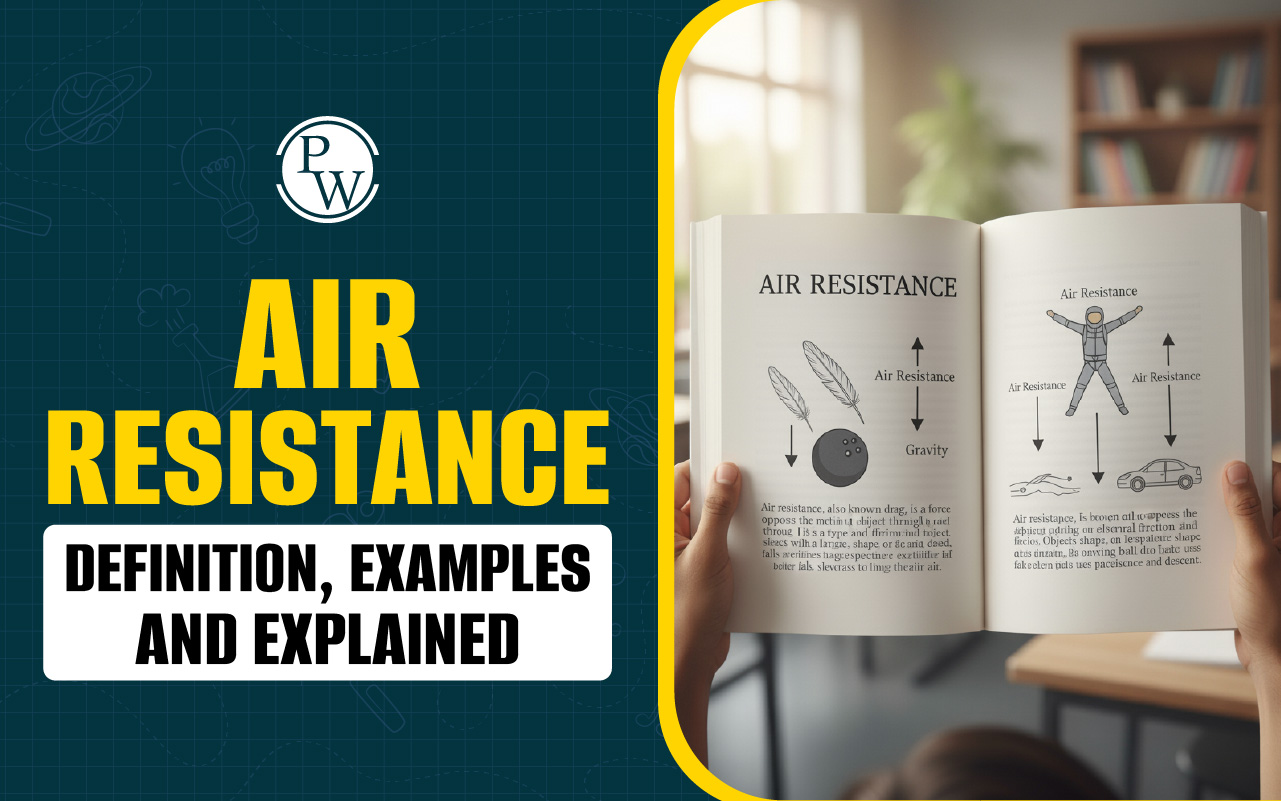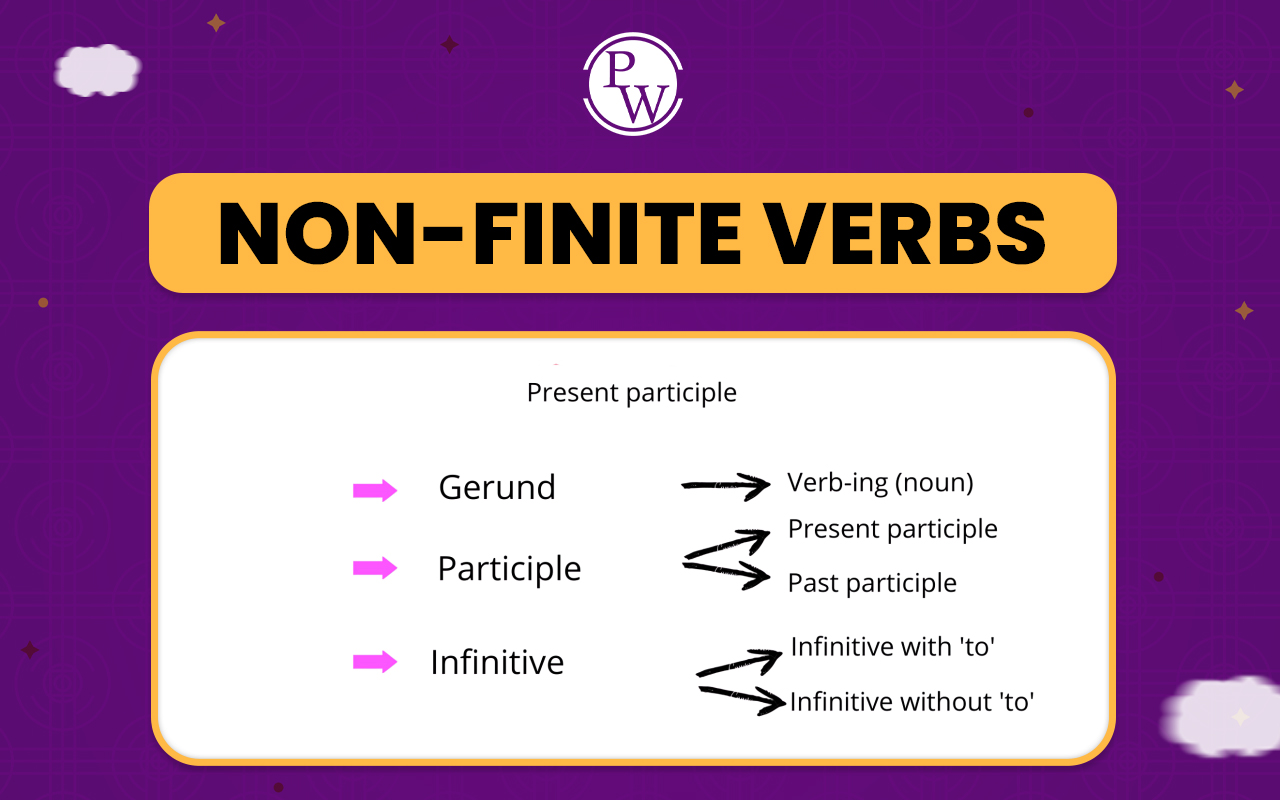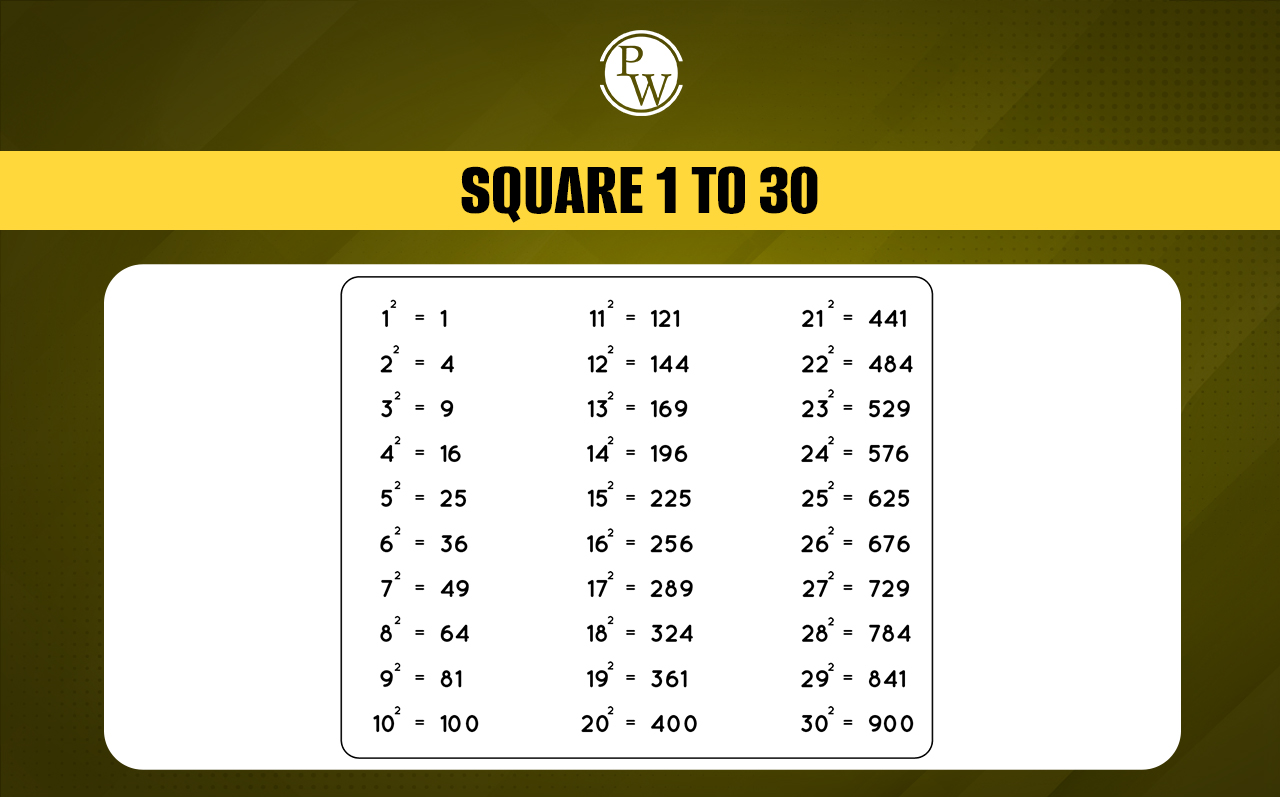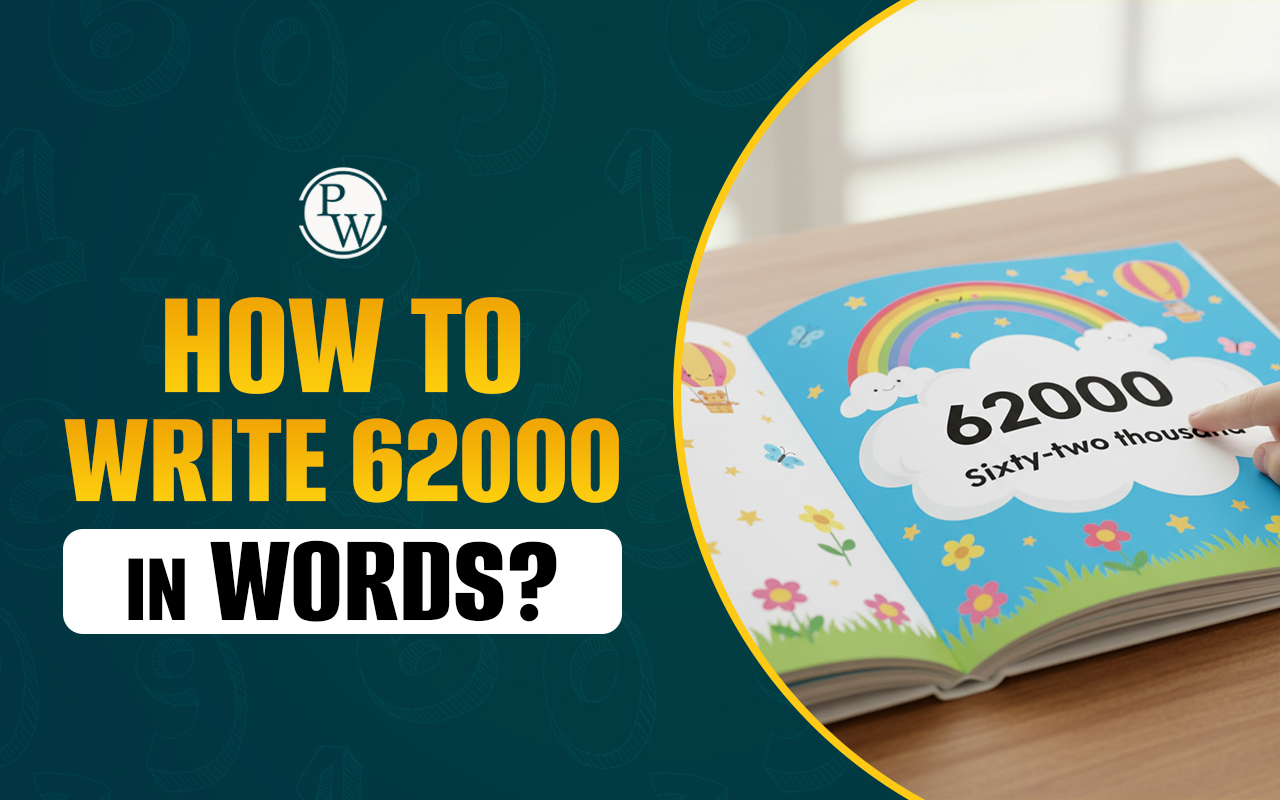
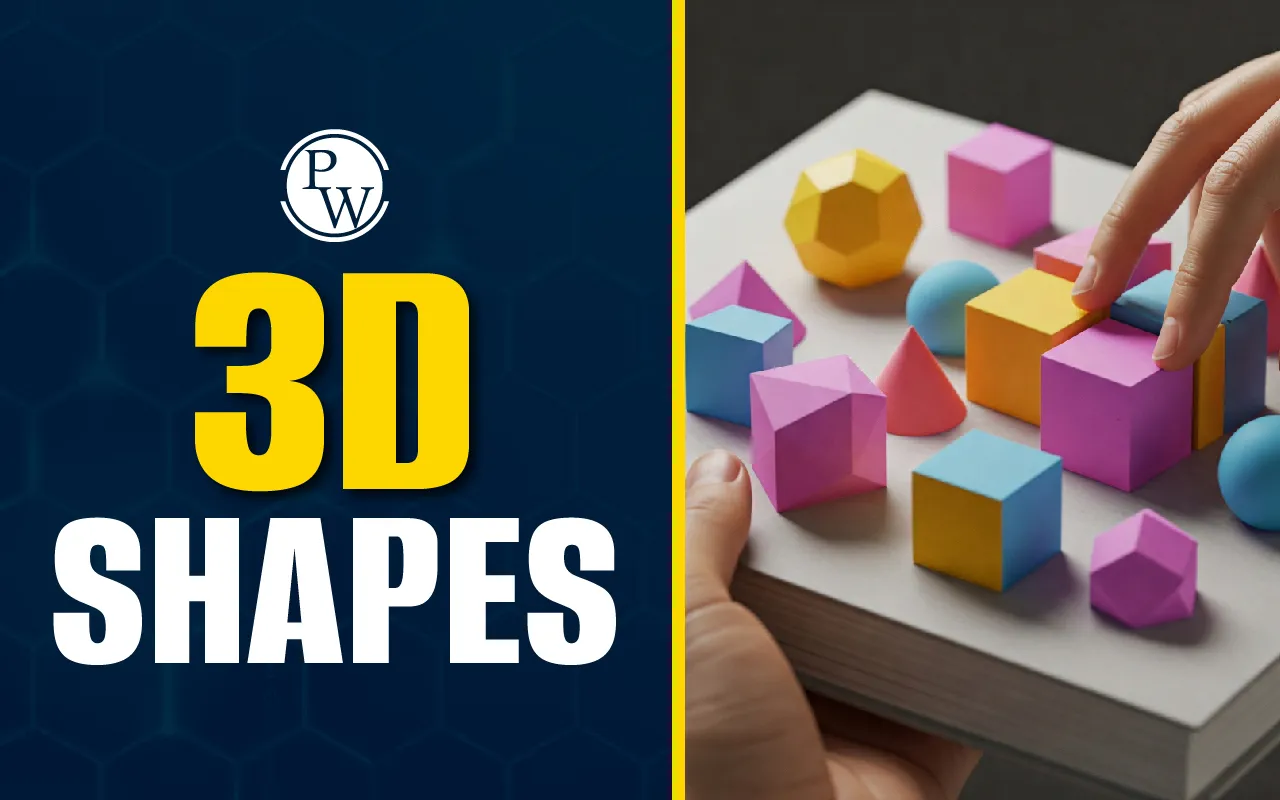
3D Shapes in Maths
Have you ever seen a ball, a box, or an ice cream cone? All these are 3D shapes. In Mathematics, 3D shapes are also known as 3-dimensional shapes because they have three sides—length, width, and height—that we can measure.
3D shapes are not flat like paper; they take up space and we can hold them in our hands. Learning about 3D shapes properties in maths helps us understand the world around us, as we see many examples of 3D shapes in our daily lives.
3 Dimensional Shapes History
Ages ago, a famous philosopher named Aristotle studied shapes and space. He explained that flat shapes have only length and width, so they do not take up space like solid shapes do. According to Aristotle, 2D shapes are made of lines and areas, while 3 dimensional shapes have volume and fill space around us. To understand 3D shapes better, we use three directions called x, y, and z. These show the width, height, and depth of any 3D shape.
What are 3D Shapes?
While studying geometry in maths, one question that crosses our mind is, "What are 3D shapes?" These are solid shapes that have three measurements: length, width, and height. Because of these three dimensions, 3D shapes in maths are not flat like 2D shapes.
They have a body and thickness. In maths, 3D shapes help us understand the size and space objects occupy. Some common examples of 3D shapes are cubes, cylinders, cones, and spheres. Keep reading to learn about the properties of 3D shapes.
Basic 3D Shapes Properties
3D shapes, or three-dimensional shapes, have special properties that make them different from flat 2D shapes. These shapes take up space and can be seen from all sides — front, back, top, bottom, and sides. Here are the main 3D shapes properties that help us describe them better:
1. Faces
A face is a flat or curved surface on a 3D shape. For example, the sides of a cube are all flat faces, while a sphere has one curved face. Some shapes have both — like a cone, which has one flat and one curved face.
2. Edges
Edges are the lines where two faces meet. They help form the shape's structure. For instance, a cuboid has 12 edges, while a sphere has none because it has no flat faces.
3. Vertices (Corners)
Vertices are points where two or more edges meet. These are the sharp corners of a 3D shape. A cube has 8 vertices. On the other hand, a cylinder has 0 vertices because it has no corners.
4. Surface Area
The surface area of a 3D shape is the total area of all its outer surfaces. It tells us how much space the shape’s surface covers. For example, to wrap a gift box (cuboid), you need to calculate its surface area to know how much wrapping paper you'll need.
5. Volume
Volume is the space a 3D shape occupies. It tells us how much it can hold. Volume is always measured in cubic units (like cm³ or m³). For example, the volume of a water bottle (cylinder) tells us how much water it can store.
Moreover, check out the table given below to see the number of faces, edges, and vertices of some commonly known 3D shapes:
|
Basic 3D Shapes Properties/Attributes |
|||
|
3D Shape |
Faces |
Edges |
Vertices |
|
Cube |
6 square faces |
12 |
8 |
|
Cuboid |
6 rectangular faces |
12 |
8 |
|
Sphere |
1 curved surface |
0 |
0 |
|
Cylinder |
2 flat (circular) + 1 curved face |
2 |
0 |
|
Cone |
1 flat (circular) + 1 curved face |
1 |
1 |
|
Square Pyramid |
1 square base + 4 triangular faces |
8 |
5 |
|
Triangular Prism |
2 triangular bases + 3 rectangular faces |
9 |
6 |
|
Hexagonal Prism |
2 hexagon bases + 6 rectangular faces |
18 |
12 |
|
Hexagonal Pyramid |
1 hexagon base + 6 triangular faces |
12 |
7 |
|
Hemisphere |
1 curved face + 1 flat (circular) face |
1 |
0 |
Read More: Division of Fractions
Types of 3D Shapes
3D shapes, also called three-dimensional shapes, come in many forms. They have depth, height, and width, which makes them different from flat 2D shapes. Each type of 3D shape has its own special structure and features. Some have curved surfaces, while others are made up of flat faces. Let’s explore some of the common types of 3D shapes studied in maths:
1. Sphere
A sphere is a round 3D shape. It has no flat face, no edge, and no corner (vertex). Every point on its surface is the same distance from the center. This makes it perfectly symmetrical. It only has one curved surface and is not a polyhedron, as it doesn't have flat faces.
2. Cube
A cube is a solid shape with six equal square faces. It has 12 equal edges and 8 corners (vertices). All sides of a cube are of the same length. Since all faces are flat and square, the cube is also known as a regular hexahedron.
3. Cuboid
A cuboid looks like a stretched cube. It has six rectangular faces, 12 edges, and 8 vertices. Unlike a cube, the length, width, and height of a cuboid can be different. It is also called a rectangular prism.
4. Cylinder
A cylinder has two equal circular faces—one at the top and one at the bottom—and one curved surface that connects them. It does not have any corners. Cylinders can be straight (right cylinders) or slanted (oblique cylinders), depending on how the circular faces are aligned.
5. Cone
A cone has a circular base and a pointed tip called the apex. It has one flat face (base), one curved surface, and one vertex. Just like a cylinder, a cone can be straight or slanted. The slant height connects the apex to the edge of the circular base.
6. Pyramid
A pyramid has a flat base and triangular faces that meet at a common point called the apex. The base can be any polygon, such as a triangle, square, or hexagon. For example:
-
A pyramid with a square base is called a square pyramid.
-
A pyramid with a triangular base is a tetrahedron.
7. Prism
A prism has two identical flat bases and rectangular faces connecting them. The shape of the base decides the name of the prism. For example:
-
A prism with triangle bases is a triangular prism.
-
A prism with square bases is a square prism.
-
Prisms can also be regular or slanted (oblique), based on how the ends are connected.
8. Torus
A torus is a special 3D shape that looks like a ring or doughnut. It is made by rotating a small circle around a bigger circle in space. A torus has no edges or vertices and has a curved surface all around.
9. Polyhe
drons (Platonic Solids)
Polyhedrons are 3D shapes with only flat polygon faces, straight edges, and corners. If all the faces are the same, they are called regular polyhedrons or Platonic solids. For example:
-
Cube: 6 square faces
-
Tetrahedron: 4 triangular faces
-
Octahedron: 8 triangular faces
-
Dodecahedron: 12 pentagon faces
-
Icosahedron: 20 triangular faces
These different types of 3D shapes help students understand geometry in a fun and practical way. Whether it’s calculating volume or identifying shapes around us, knowing these shapes makes learning easier.
Read More: Scalene Triangle
3D Shapes Examples Based on Real Life
3D shapes in maths are not just limited to textbooks; they are all around us in the real world. Many objects that we use have the shape of cubes, cones, cylinders, and more. These real-life examples of 3D shapes help us understand how these look and why they are important. Here are some common 3D shapes examples based on real life:
-
Cube: A Rubik’s Cube, dice, and ice cubes are shaped like a cube.
-
Cuboid (Rectangular Prism): Books, bricks, and pencil boxes are good examples of cuboids.
-
Sphere: A football, basketball, and marbles are shaped like spheres.
-
Cylinder: Buckets, cans, and water bottles show the shape of a cylinder.
-
Cone: Ice cream cones, party hats, and traffic cones are shaped like cones.
-
Pyramid: The Pyramids of Egypt and some tents are shaped like pyramids, with a flat base and triangular sides.
-
Prism: A tent or a Toblerone chocolate bar shows the shape of a triangular prism.
These real-world examples of 3D shapes make it easy for students to understand how three-dimensional shapes appear and are used around us.
Read More: Maths Puzzles Questions and Answers
3 Dimensional Shapes Formulas
All 3D shapes in maths have two important features, which are surface area and volume. Where surface area is the total area that covers the outside of a 3D shape. It includes all flat and curved surfaces, while volume is the amount of space a 3D shape takes up. It tells how much it can hold inside.
Different 3 dimensional shapes have different formulas for finding their surface area and volume, as outlined here:
|
3 Dimensional Shapes Formulas |
|
|
3D Shape |
Important Formulas |
|
Sphere |
|
|
Cylinder |
|
|
Prism |
|
|
Cone |
|
|
Cube |
|
|
Cuboid |
|
|
Pyramid |
|
What are 3D Shapes Nets?
A 3D shape net is a flat 2D pattern that can be folded to make 3D shapes. It is like an unfolded version of the solid. When we lay a 3D shape flat, face by face, the pattern we see is called a net. These nets help us understand how a 3D object is formed using simple 2D shapes. By folding the net along its edges, the flat design turns into a cube, cone, prism, or any other 3D figure.
Applications of 3D Shapes in Real Life
3D shapes are used in many real-life areas to help design, create, and improve things around us. Find out some key applications of 3D shapes in real life here:
-
In Architecture and Construction: Architects use 3D shapes like cubes and pyramids to make models of buildings. This helps them see designs from all sides and find problems before building starts.
-
In Engineering: Engineers create 3D models of machines and structures. These models show how parts fit together and help fix problems early to make sure designs work well and are safe.
-
In Medical Science: Doctors use 3D shapes to make detailed images of the inside of the body, like in MRI and CT scans. These pictures help in better diagnosis and treatment.
-
In Gaming and Entertainment: 3D shapes are used to make game characters, movie effects, and virtual worlds look real and exciting.
-
In Restaurants: Designers use 3D tools to plan restaurant layouts. Chefs use 3D plating to make food look beautiful and creative.
Boost your confidence in math with Curious Junior’s Mental Math Online Classes! Learn about 3D shapes and many other concepts in a fun and simple way. Book a demo class now!
3D Shapes FAQs
What do 3 dimensional shapes mean?
How are 3D shapes different from 2D shapes in maths?
What are some common examples of 3D shapes?
Why are 3D shapes important?





